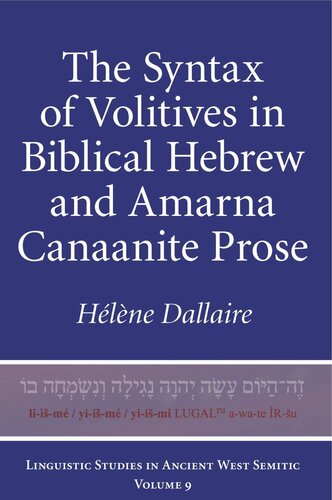

Most ebook files are in PDF format, so you can easily read them using various software such as Foxit Reader or directly on the Google Chrome browser.
Some ebook files are released by publishers in other formats such as .awz, .mobi, .epub, .fb2, etc. You may need to install specific software to read these formats on mobile/PC, such as Calibre.
Please read the tutorial at this link: https://ebookbell.com/faq
We offer FREE conversion to the popular formats you request; however, this may take some time. Therefore, right after payment, please email us, and we will try to provide the service as quickly as possible.
For some exceptional file formats or broken links (if any), please refrain from opening any disputes. Instead, email us first, and we will try to assist within a maximum of 6 hours.
EbookBell Team

4.3
38 reviewsDuring the past century, numerous books and articles have appeared on the verbal system of Semitic languages. Thanks to the discovery of Ugaritic texts, Akkadian tablets, Canaanite letters found at Tell el-Amarna in Egypt, Hebrew and Aramaic inscriptions, and the Dead Sea Scrolls, our understanding of the phonology, morphology, and syntax of the Semitic languages has increased substantially.
Dallaire focuses primarily on prose texts in Biblical Hebrew and Amarna Canaanite in which the verbal system (morphemes, syntax) expresses nuances of wishes, desires, requests, and commands. According to her, volitional concepts are found in every language and are expressed through verbal morphemes, syntagmas, intonation, syntax, and other linguistic means.
The Syntax of Volitives in Biblical Hebrew and Amarna Canaanite Prose attempts to answer the following questions: Do volitives function in a similar way in Biblical Hebrew and Amarna Canaanite? Where and why is there overlap in morphology and syntax between these two languages? What morphological and syntactical differences exist between the volitional expressions of the languages? In attempting to answer these questions, the author bears in mind the fact that, within each of these two languages, scribes from different areas used specific dialectal and scribal traditions (for example, northern versus southern, peripheral versus central).